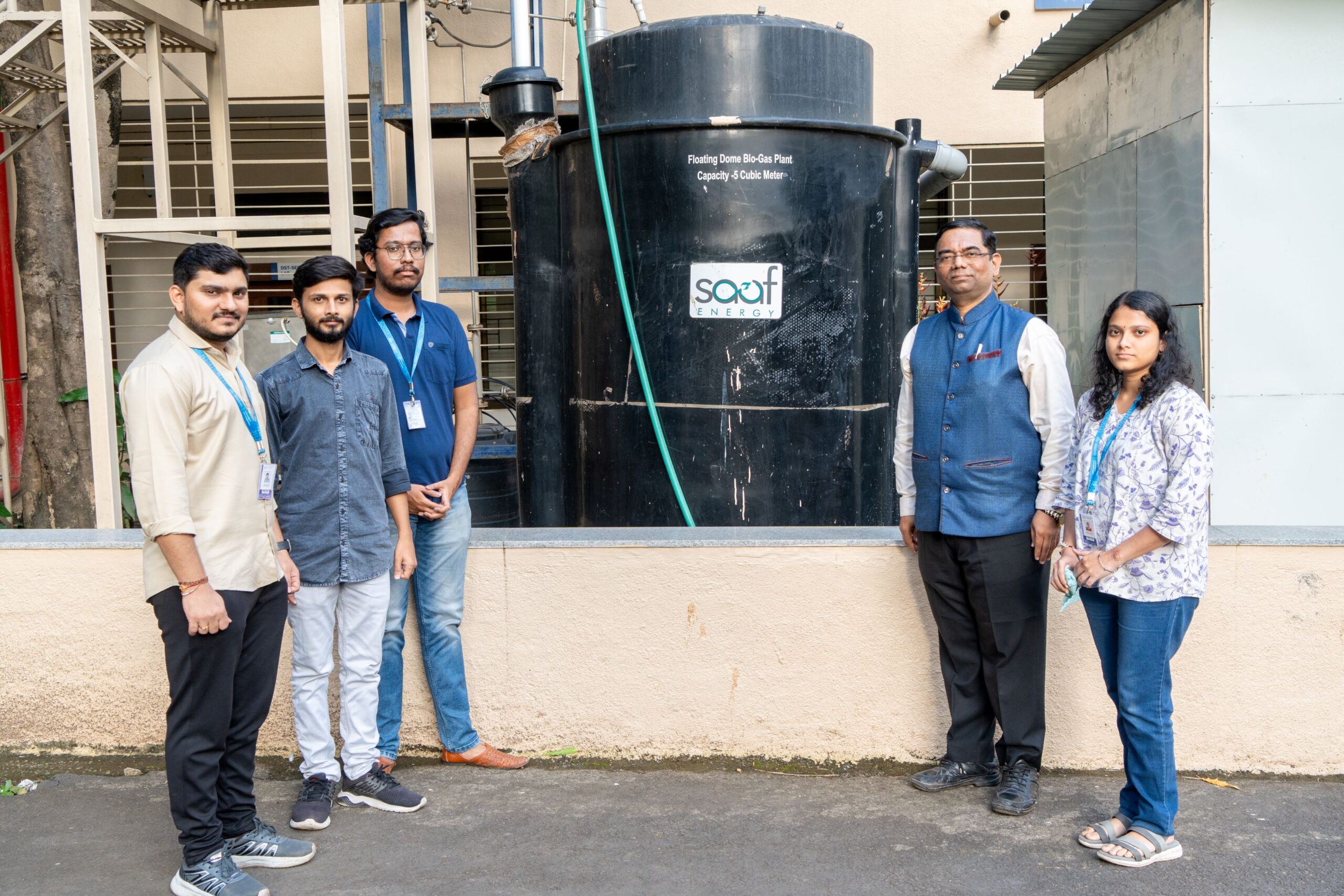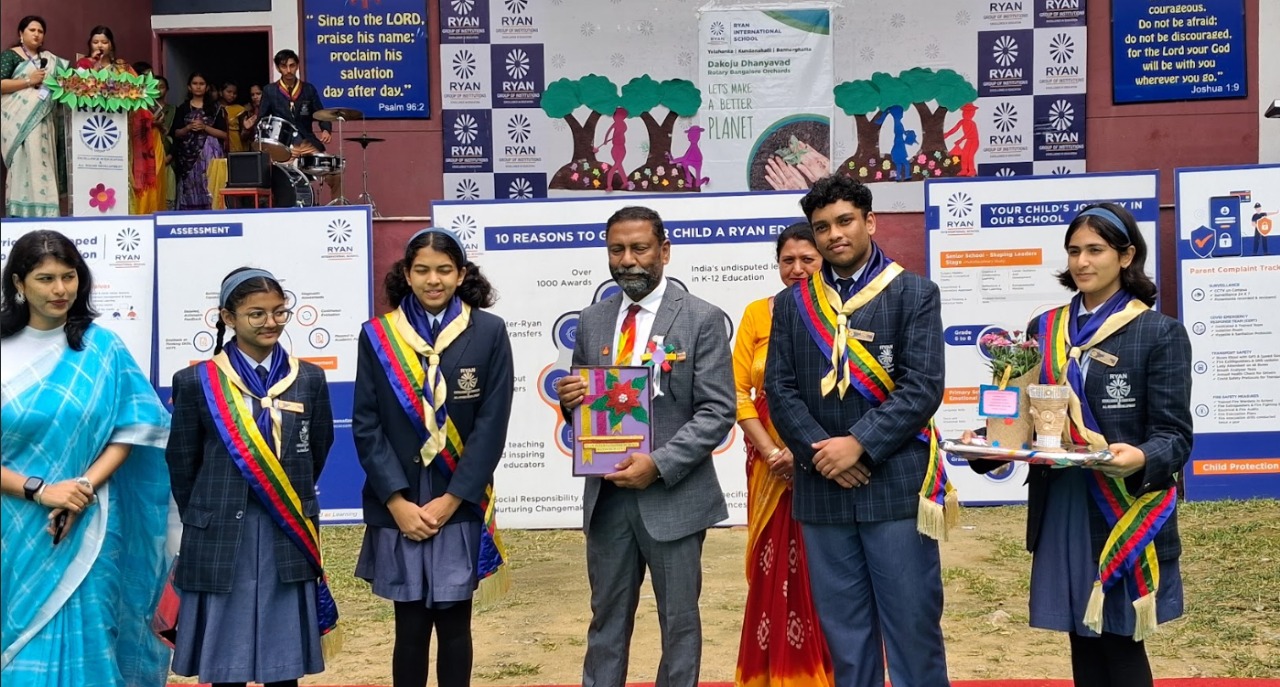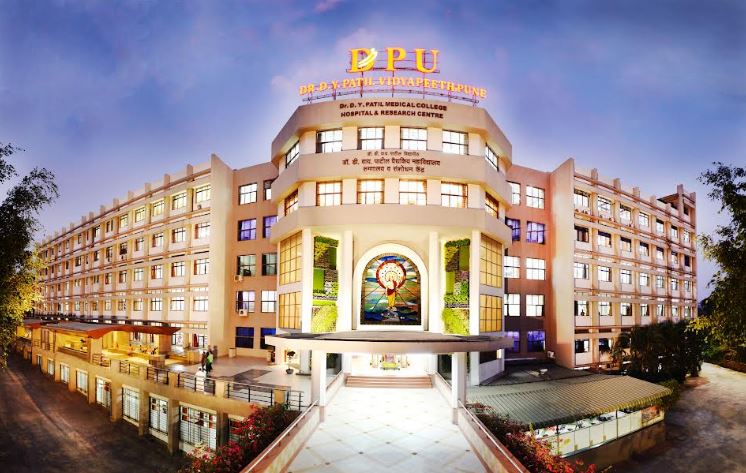Pune: Researchers at the Green Hydrogen Research Centre of MIT World Peace University (MIT-WPU), under the leadership of Dr. Ratnadip Joshi (Associate Director, Green Hydrogen Research Centre at MIT-WPU), have developed an innovative, carbon-negative process that produces both BioCNG and Green Hydrogen from mixed agricultural waste, offering a cleaner and more affordable path to energy independence. This innovation supports India’s Atmanirbhar Bharat mission and the philosophy of LiFE (Lifestyle for Environment). It also aligns with the National Green Hydrogen Mission, which aims to produce 5 million metric tonnes of Green Hydrogen annually by 2030.
The idea emerged from discussions on the ill effects of climate change such as incessant rains in short spans, prolonged droughts, and frequent cyclones as well as conversations with farmers concerned about managing huge volumes of agricultural waste. The older biomass-to-gas conversion methods had efficiencies as low as 5–7 percent.
Dr. Joshi said, “Unlike many efforts that rely on a single feedstock such as paddy straw or napier grass, this research demonstrates success with mixed agro waste, including millet trash and other seasonal crop residues. This approach is particularly effective for regions with low rainfall and drought. Over the course of the research, a bio-culture was developed to achieve a biomass-to-gas conversion efficiency of 12%. A fully scalable 500 kg/day pilot plant, supported by four granted patents, is now established on the MIT-WPU campus. The generated biogas showed high methane content, which was further utilized to produce green hydrogen through a green catalytic pyrolysis process”
Aniket Patrikar, Ph D research scholar MIT World Peace University said, “We have used a pyrolysis catalyst derived from plants, helping us produce green hydrogen without carbon dioxide emissions, thus eliminating the need for expensive carbon capture systems. The process also produces Biochar, a valuable byproduct used in industries such as pharmaceuticals, cosmetics, fertilizers, and construction.”
Avinash Lad, Ph D research scholar, MIT World Peace University highlighted, “The world is looking into electrolysis, but it remains expensive, with costs above $2 per kilogram. Our process is carbon-negative, affordable, and scalable, with the potential to bring green hydrogen production costs down to $1 per kilogram while solving India’s agricultural waste problem. Prime Minister Modi has set a goal for India to achieve net-zero emissions by 2070. With grassroots-proven breakthrough innovations like this, Bharat is making remarkable progress and may reach net-zero by 2050, becoming a global leader in clean, renewable, and sustainable energy.”
Dr Rahul Karad, Executive President, MIT World Peace University said, “At MIT-WPU, we strongly believe that universities must not only impart knowledge but also create solutions that directly impact society and the nation. This research is a proud moment for us, it shows how the right blend of research, innovation, and social responsibility can address pressing challenges like climate change and energy security. What excites me most is that this innovation is not just a lab experiment; it is scalable, practical, and rooted in India’s realities. I see this as a step forward in empowering farmers, supporting sustainable industries, and preparing our students to lead India into a greener, self-reliant future.”
The process also generates biofertilizers as a byproduct, which can replace urea usage in farming. The team has been granted two patents for green-coated, sustainable-release biofertilizers, which promise to reform agriculture by reducing reliance on artificial fertilizers like urea and preventing excessive soil salinity—a long-term threat to Indian agricultural productivity.
Unlike urea, which is hydrophilic and absorbs water from crop roots during delayed monsoons, these biofertilizers release NPK nutrients only when water is available. This will help farmers and rural India enhance crop productivity while realizing the benefits of the circular economy. “With biofertilizer usage, we are contributing to carbon sequestration and reducing the environmental crisis arising from greenhouse gas emissions,” Prof. Joshi explained.
This industrial innovation has already caught the attention of the energy sector. With major companies planning to set up thousands of CBG and hydrogen units, leading entrepreneurs have expressed interest in partnering with MIT-WPU for technology transfer. The university also welcomes industry–academia collaboration, benefiting learners by making them industry-ready and developing skilled youth to empower the nation.



